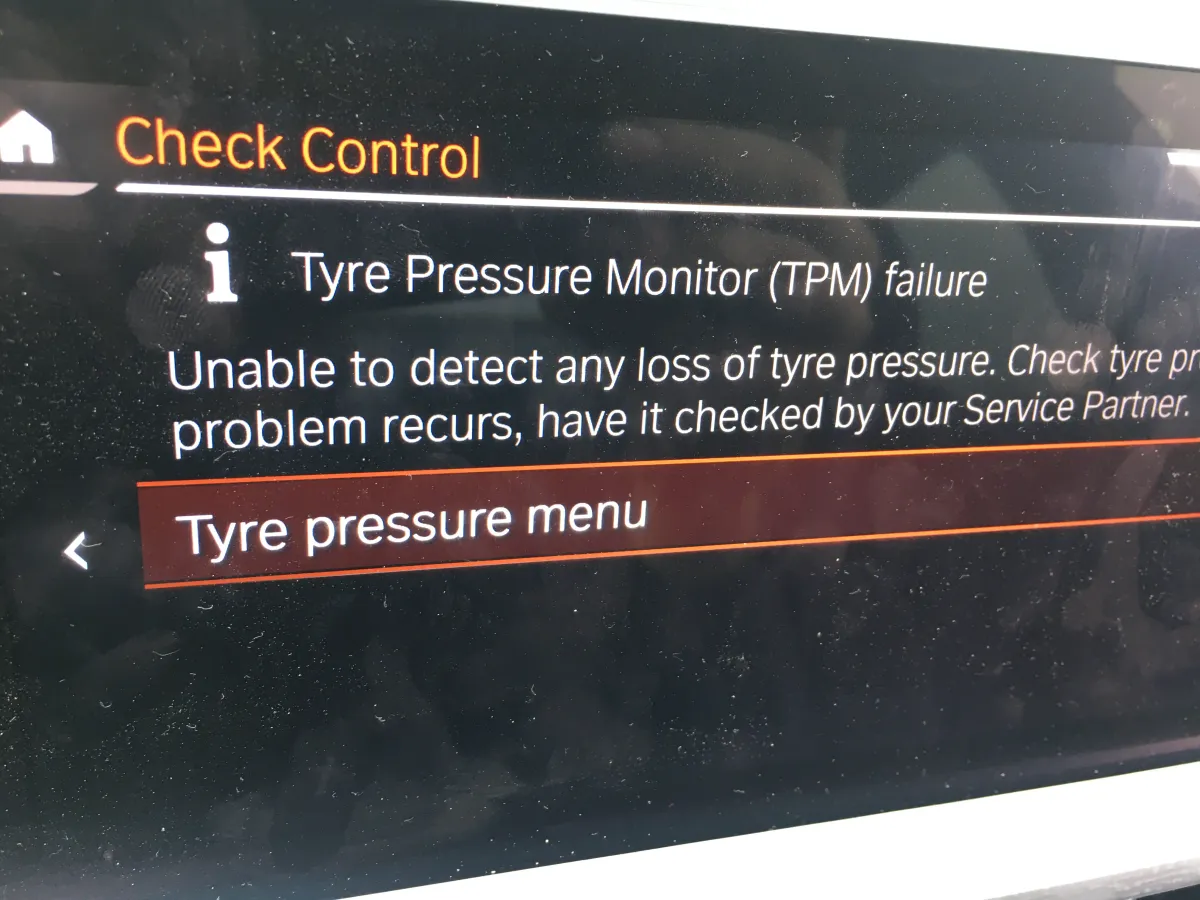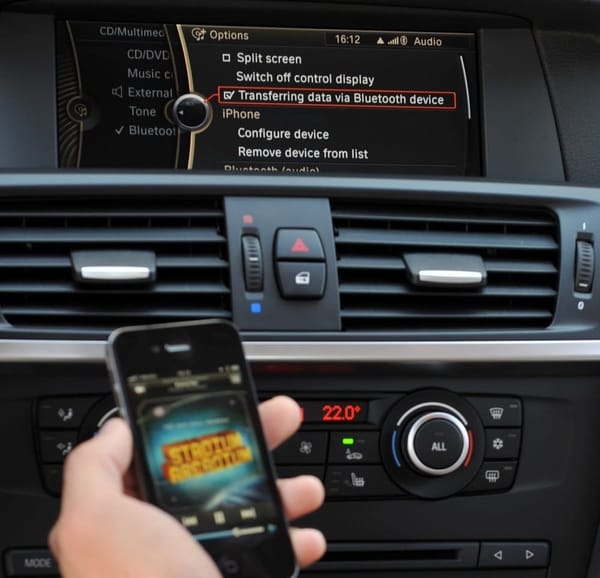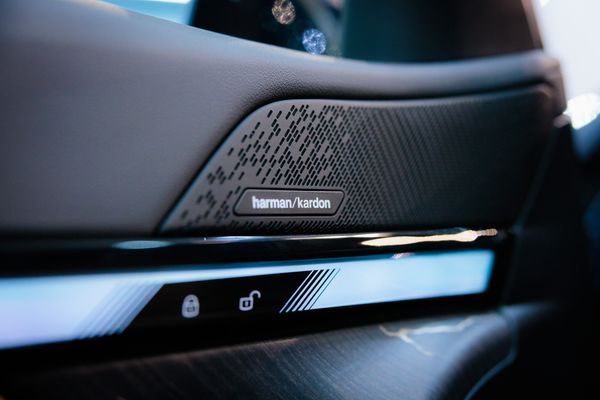BMW TPM Malfunction: From Diagnosis to Solution

The Tire Pressure Monitoring (TPM) system in a BMW isn't just another fancy addition to your ride—it's a crucial component that ensures you're driving safely.
As your car speeds down the highway or navigates tricky terrain, it's the TPM that's keeping a vigilant eye on each tire's pressure, ready to alert you if anything goes amiss.
However, like every intricate system, the TPM isn't immune to problems. And if there's one component that often plays the villain, it's the wheel sensor. Whether it's a mechanical injury, a tired battery waving its last goodbye, or an incorrect version playing a misfit, the wheel sensor is often the heart of the issue.
But fear not!
Whether you're a seasoned mechanic or just a BMW enthusiast wanting to understand your car better, this guide will take you through the ins and outs of the BMW TPM system, its malfunctions, and how to set things right.
Let's get rolling!
Key Facts
Navigating the world of the BMW TPM system can be a maze.
But before we dive deep, here are some key facts that can act as your compass:
The Wheel Sensor is King
Among all the components of the TPM system, the wheel sensor reigns supreme. It's the most common culprit when things go awry, with mechanical damage and battery failure being its most frequent nemeses.

Battery Life Matters
While these sensors are quite resilient, their battery isn’t eternal. On average, you can expect about a decade of service before the battery raises the white flag. And when one goes, others often follow—so keep an eye out!
One Size Doesn’t Fit All
Think all sensors are created equal? Think again. There's a common pitfall of replacing a faulty sensor with an incorrect version. This mismatch can lead to more problems than solutions.
Specialty Tools Required
You can't just use any tool to test these sensors. You'll need specialized tools like the RDC tool or scanner for accurate diagnostics.
Water is Not Always a Friend
For models with externally installed RDC modules, water intrusion can be a menace. If water finds its way in, it can wreak havoc on the module.
5th Gen TPM—A Class of Its Own
Introduced in the G20, this generation has a unique requirement. If a sensor is depressurized for more than two minutes, it requires reprogramming.
With these key facts in your arsenal, you're better prepared to understand the complexities of the TPM system and tackle any challenges that come your way.
How the TPM System Works
Peeling back the layers of your BMW's Tire Pressure Monitoring (TPM) system can reveal a fascinating blend of engineering and technology.
Let's break it down:
The Basics
The primary role of the TPM system is straightforward: it continuously monitors the air pressure inside your tires. But how does it achieve this? The magic happens with the help of wheel sensors placed inside each tire. These sensors measure the pressure and relay this data via radio signals.
The Display
Your BMW's iDrive is more than just a fancy infotainment system—it's also your window into the TPM's findings. Once the TPM control unit receives the pressure data, it's processed and displayed on your iDrive, ensuring you're always informed about your tire health.
Evolution Over Time
Since the dawn of the TPM system in the E65 7 Series, BMW has been at the forefront of its evolution. Over the years, the company has introduced five distinct TPM generations, each with its unique features and advancements. From the first active monitoring in the E65 to the latest Gen 5 with QR-code tires and programmable sensors, the journey has been nothing short of revolutionary.
A Response to Safety Concerns
The development and refinement of the TPM system weren't just for kicks. It was a direct response to mounting tire safety concerns. In the early 2000s, catastrophic tire failures were making headlines, leading to the U.S. Congress passing the Transportation Recall Enhancement, Accountability, and Documentation (TREAD) Act in November 2000. A significant component of this act was the TPM, envisioned to detect pressure loss before it becomes a safety hazard.
By understanding how the TPM system works and its historical evolution, you'll appreciate the peace of mind it offers every time you hit the road in your BMW.
Spotlight on TPM Generations
BMW's dedication to innovation is evident in the evolution of its Tire Pressure Monitoring (TPM) systems. Let's journey through time and explore each generation:
TPM Generation 1 (2001 – 2006)

- Introduction: The E65 7 Series was the pioneer, introducing the world to BMW's "direct" TPM system, labeled as the Tire Pressure Control or RDC. Soon, the E46 3 Series also got a taste of this technology.
- System Complexity: This generation, looking back, seems intricate. With TPM sensors in each wheel and a network of antennas and aerials, it was an elaborate dance of radio signals.
- Battery Life: These sensors were powered by long-life lithium-ion batteries. However, their active nature meant they often lasted about half a decade.

TPM Generation 2 (RDC) 03/2006 – 09/2010

- Trigger-Type System: This generation adopted a "trigger-type" mechanism. Instead of multiple antennas, Gen 2 utilized trigger modules. Each sensor had a unique ID that communicated directly with a central receiving antenna.
- Activation: Unlike the always-active Gen 1, the Gen 2 TPM wheel sensor only sent data when prompted by the TPM module.

TPM Generation 3 (RDC Low) 09/2010 – 04/2013
- Simplicity & Reliability: Aptly named "Low" for its "low-cost" design, this generation cut down on components, featuring just four sensors and an RDC module with an integrated antenna. It's hailed as one of the most reliable TPM systems.
- Data Transmission: The wheel electronics relayed a wealth of information, from tire pressure and air temperature to battery life and acceleration data.

TPM Generation 4 (RDCi) 04/2013 –
- Debut: The F32 4 Series Coupe was the first to enjoy the benefits of the Gen 4 RDCi TPM system.
- Design Refinements: The RDC antenna was strategically relocated under the car's rear shelf, and the module was seamlessly integrated into the DSC control unit, enhancing reliability.

TPM Generation 5 (RDCi) 2019 –

- Latest & Greatest: The G20 3 Series heralded the arrival of the most recent TPM generation.
- Unique Features: What sets this generation apart is the introduction of QR-code tires and programmable TPM sensors, emphasizing the integration of technology and convenience.
Understanding each TPM generation's unique attributes and advancements showcases BMW's commitment to safety, innovation, and driving experience enhancement. As technology continues to evolve, one can only imagine what the next TPM generation will bring to the table.
Common TPM Problems & Fixes
While BMW's TPM system is an engineering marvel, it's not without its quirks and challenges. Let's explore the common problems BMW owners might face and how to address them:
Wheel Sensor Doesn't Send Signal Due to Dead Battery
- The Problem: After about a decade of use, the battery within the wheel sensor might give out.
- The Implication: A single dead battery can render the entire TPM system inoperative.
- The Fix: Replace the faulty sensor. Pro Tip: Always check the battery life of all sensors during a diagnostic test to preemptively identify potential issues.
Mechanically Damaged Wheel Sensor
- The Culprit: Tire changes can be risky, and even experienced technicians might accidentally damage a wheel sensor.
- The Fix: Replace the damaged sensor. Always ensure the tire change is done with utmost care, especially with larger UHP run-flat tires.
Mismatched Wheel Sensor Installation
- The Problem: Installing the wrong version of a wheel sensor is a common mistake, leading to system malfunctions.
- The Fix: Ensure you're using the correct sensor for your car's TPM generation. Using tools like BMW's ETK can be invaluable in this process.
5th Gen RDCi Sensor Programming Needs
- Unique Quirk: If a Gen 5 sensor is depressurized for more than two minutes, it requires reprogramming.

- The Fix: After replacing a tire or sensor, ensure the sensor is properly programmed using an RDC tool. This tool is also essential for registering tire replacements via the tire's QR code.

Corrosion-induced Faults
- The Problem: The RDC module, especially in Gen 2 and Gen 3 systems, can be susceptible to corrosion due to water ingress.
- The Fix: Check for water damage and replace and code the RDC module if necessary. Regularly inspect the module's location for water buildup.
Wiring and Electrical Issues in Older Generations
- The Problem: Generations 1 and 2, with their more complex wiring systems, often face issues related to corroded wiring and connectors.
- The Fix: Troubleshoot wiring issues diligently, and consider following ISTA test plans for a systematic diagnostic approach. Replacing corroded components is often necessary.
Facing TPM issues can be daunting, but with the right knowledge and a systematic approach, you can ensure your BMW's tires remain well-monitored and your journeys remain safe.
Step-by-Step Diagnostics & Fixes
Diagnosing a TPM problem doesn't have to feel like rocket science. Here's a comprehensive guide to help you identify and address the most common issues with your BMW's TPM system:
STEP 1 – Reading the Fault Memory
- Connect a Diagnostic Scanner: Attach your scanner to your BMW to read the fault memory (DTC). Any malfunction will trigger a unique code.
- Choose the Right Tool: While most scanners can detect common issues, for intricate problems, tools like ISTA are irreplaceable.
- Check Sensor Health: With advanced tools like ISTA, you can also gauge the battery life of each sensor with month-level accuracy.
STEP 2 – Finding the Right Replacement Part
- Understand the Issue: With the DTC in hand, pinpoint the exact problem—be it a dead battery, a mechanical fault, or an incorrect sensor.
- Choose Genuine Parts: Avoid generic or mismatched sensors. Use tools like BMW's ETK to ensure you get the perfect fit for your car's TPM generation.
- Beware of Aftermarket Pitfalls: While aftermarket options might be tempting, ensure they're compatible with your vehicle. A common mistake is installing a sensor designed for a different TPM generation.
STEP 3 – Replacing the Sensor
- Visit a Professional: Unless you're equipped with the right tools and expertise, it's best to trust a professional with this step.
- Sensor Installation: Ensure the new sensor is carefully installed without causing any mechanical damage. Clean the valve sealing surface before installation.
- Torque Specifications: Different TPM generations have unique torque specs for the valve-to-rim connection. Adhere to these specifications for optimal performance.
STEP 4 – Resetting the TPM System
- Choose the Right Reset Method: Depending on your BMW model, you can reset the TPM through the iDrive's menu, the instrument cluster board computer menu, or by pressing the TPM button in the center console.
- Initialize the System: This should be done when tire pressure is adjusted, after a wheel swap, or following a wheel exchange between axles.
- Understand Pressure Standards: Always refer to the recommended tire pressure—either through iDrive or the label on the driver's side B pillar. Remember, the readings refer to cold tire pressure, so adjust accordingly before long drives.
By following these systematic steps, you can ensure that your BMW's TPM system remains in top shape, ready to provide accurate readings and keep you safe on the road.
The Evolution of the BMW Tire Pressure Monitoring System
The BMW TPM system's journey is a testament to the brand's unwavering commitment to safety and innovation. Let's travel back in time and trace its evolutionary path:
The Genesis: Safety Concerns Prompt Change
In the late 90s and early 2000s, catastrophic tire failures were making headlines. The alarm bells rang loud enough for the United States Congress to intervene. In November 2000, they passed the Transportation Recall Enhancement, Accountability, and Documentation (TREAD) Act. A cornerstone of this act was the TPM, aiming to detect pressure loss before it compromises safety.
Indirect to Direct: A Paradigm Shift
The initial green light by the NHTSA was for indirect TPM systems. These systems gauged tire pressure indirectly by monitoring the rotational speed via wheel speed sensors. But there was a catch: Indirect systems couldn't detect a uniform pressure drop in all four tires.
Recognizing this limitation, the NHTSA mandated a shift. By 2007, they required all auto manufacturers to adopt "Direct" TPM systems.
Flat Tire Monitor System (FTM/RPA)
BMW's first foray into TPM was with the indirect FTM system, which debuted on the 2000 E39 M5. While it was a leap forward, its inability to detect uniform pressure loss in all tires was a significant drawback.
Direct TPM Systems: A New Era
BMW took the NHTSA's mandate to heart, introducing the world to its direct TPM system with the E65 7 Series. This marked the beginning of the TPM generations we're familiar with today.
Constant Refinement
From the Gen 1 system, which was a complex mesh of sensors, aerials, and antennas, to the Gen 5 system, which introduced QR-code tires and programmable sensors, BMW's TPM journey has been about relentless improvement.
The Future
As we stand at the cusp of a new era with autonomous vehicles and smart roads, TPM systems will undoubtedly continue to evolve. With integrated sensors, IoT connectivity, and real-time analytics, the TPM systems of the future might just redefine our understanding of tire safety.
By understanding the history and evolution of the BMW TPM system, we can appreciate the lengths the brand goes to ensure that every journey, no matter how short or long, is a safe one.
Conclusion
The BMW Tire Pressure Monitoring (TPM) system exemplifies the brand's dedication to driving excellence and passenger safety. From its embryonic stages to the sophisticated systems we see today, it's evident that BMW has always been at the forefront of innovation. The TPM's evolution underscores the importance of continuous improvement, especially when it concerns the safety and comfort of drivers and passengers.
However, as with any technology, challenges arise. By understanding the common TPM issues and their solutions, BMW owners can ensure a smoother, safer driving experience. Diagnostics and regular checks play a pivotal role in preempting potential problems, and a proactive approach is always the best defense against unforeseen issues.
As we look ahead, it's exciting to imagine the future of TPM systems. With rapid advancements in technology, the integration of AI, and the rise of autonomous vehicles, the next generation of TPM systems will undoubtedly be even more efficient, intelligent, and user-friendly.
In essence, the story of the BMW TPM is a testament to the brand's commitment to innovation, safety, and the pursuit of perfection. As drivers, it's our privilege to be part of this journey, enjoying the unparalleled driving experience that only a BMW can offer.
Safe travels!





